According to the National Strength and Conditioning Association, strength training is defined as:
"A specialized method of conditioning that involves the progressive use of resistance to increase one's ability to exert or resist force."
Resistance training includes the use of multiple forms of resistance while performing different exercises. Since resistance training is broader in scope than strength or weight training, which usually assumes free weight or weight machines are required, resistance training can include anything that provides resistance.
I often hear from readers that they enjoy training with their spouse, but because their strength varies so greatly, it is often difficult to get a good workout in because most of the time is spent changing weights.
Thinking about the definition of resistance training itself, this week's piece is about a different way to incorporate resistance training.
Maybe weights are not available. You want to get a quick workout in without leaving the house. You are a trainer who wants to train a number of clients at once. Or you just want to add a little twist to your workout.
Partner-Assisted Manual Resistance Training
This week is all about Partner-Assisted manual resistance training. Yes, the name implies that you do need a partner for the exercises I'll describe later in the piece.
Partner-Assisted manual resistance training is an alternative to the more conventional forms of resistance most individuals are accustomed to. Instead of the standard weights, the resistance here is provided by a training partner (although if one partner is much stronger than the other, it can also be used in addition to a weight).
Like anything else, there are pros and cons with this type of training.
Pros:
- No special equipment or facility is required.
- Adds variety to standard workouts.
- If you're a trainer, large numbers of clients can be trained at once.
- Resistance and speed are controlled by the amount of resistance placed upon the lifter by the partner.
- Allows a person to "change" resistance placed on them according to their strength and fatigue level, whereas if you're lying under 225 pounds on the bench press, you're in trouble if you are unable to lift the weight.
Cons:
- Can be difficult for partners with extreme strength differences.
- Amount of resistance is limited by the partner's strength.
- Always requires a partner.
- There is no measurable way to record strength differences as there is with weight training.
- The lifter may be limited by the partner's fatigue.
Exercises
With that said, here are some exercises to try next time you're looking for a little variety. Each complete repetition for the exercises described below should take approximately 6-10 seconds (3-5 seconds for the concentric and eccentric portion of the lifts).
Partner-Assisted Seated Military Press
Lifter can sit on a stability ball, bench, chair or whatever is available as long as there is room behind them for the partner to stand.
Lifter starts by putting arms in a military press position (upper arms parallel with the ground and arms bent 90 degrees at the elbow). Partner places hands on top of lifter's hands and partner provides enough resistance that allows the lifter to complete each concentric part of the repetition in approximately 3 seconds.
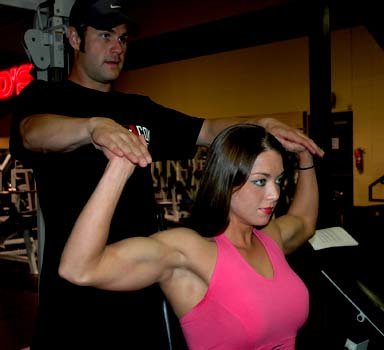
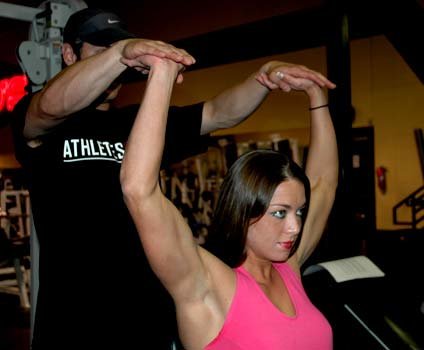
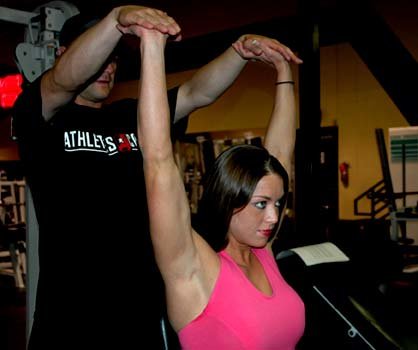
Partner-Assisted Seated Military Press.
The lifter should then resist the partner on the eccentric (lowering) part of this movement; again, do this over a 3 second time period.
Partner-Assisted Row
This exercise requires a towel (larger shower towels work best). Lifter and partner sit across from each other as if they were using the cable row machine at the gym (legs straight out in front of them, with soles of shoes touching).
The lifter should grab the towel with an underhand grip, while the partner grabs the towel at either end (hint, the closer the lifter's and partner's hands are placed on the towel, the harder the exercise will be to perform).
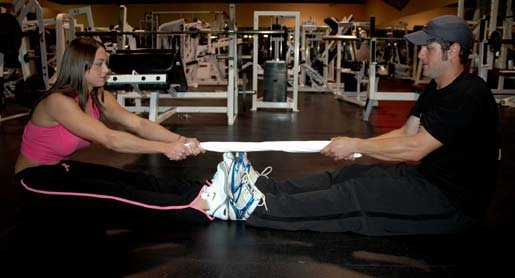
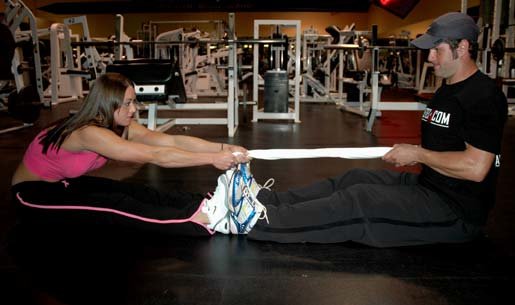

Partner-Assisted Row.
The lifter should then "row" the towel into their body, as if performing a seated cable row. Meanwhile, by resisting this rowing motion, the partner is also benefiting as they will be performing the eccentric part of the lift. Reverse the motion and both lifter and partner will benefit.
Partner-Assisted Biceps Curl & Triceps Pushdown
This movement also requires a towel. A shorter "face" towel would work best for this movement.
Partner and lifter stand facing each other about 12" apart. Lifter grabs center of towel with both hands, palms up. Partner grabs either end of the towel, also with palms up (hands are about 6-12" away from one another).

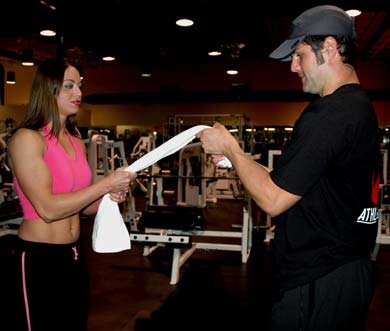
Partner-Assisted Biceps Curl & Triceps Pushdown.
Lifter curls the towel up (biceps curl) as partner resists. Lifter then presses the towel town (triceps pushdown) as the partner resists. Partner and lifter should then reverse hand positions and switch repeat exercise.
Partner-Assisted Leg Extension
Lifter sits in a chair or on end of table so feet are not able to touch the ground. Partner grabs ankles (where the pad of a leg extension machine would be).
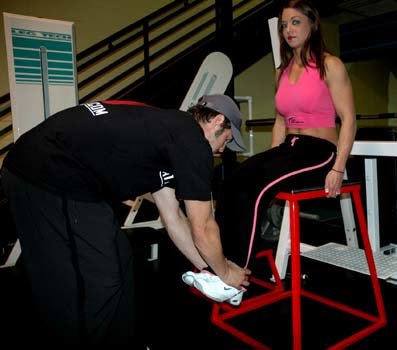
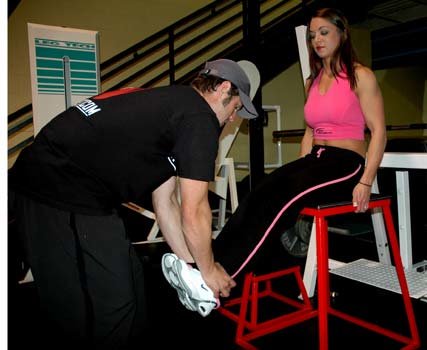

Partner-Assisted Leg Extension.
As lifter performs a leg extension, partner resists the lifting portion of the movement. The partner should then put resistance on the ankles as lifter lowers legs forcing lifter to resist during the lowering of the movement.
Partner-Assisted Pushup
Lifter gets into pushup position. Partner places hands on upper back over the shoulders and puts resistance on lifter as they lower toward the ground (careful not to push them into the ground) and as they raise up to starting position.
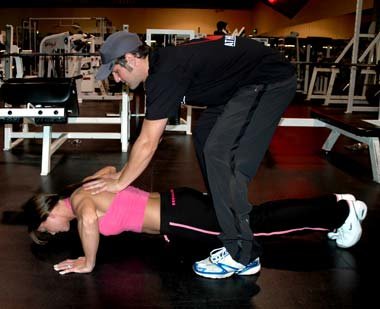
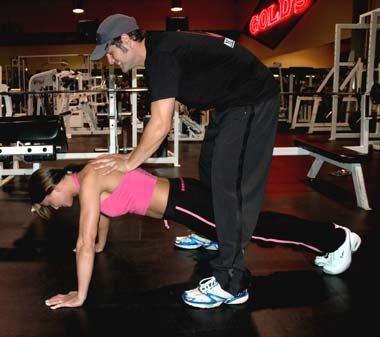
Partner-Assisted Pushup.
Note: If unable to perform full push-ups, this same exercise can be performed if completing a push-up with knees on the ground.
Summary
There are a variety of other exercises that can be performed in this manner in addition to those listed here. This should provide an idea of how some of these can be performed, add variety to a workout, and give you something to do while on vacation or in a pinch.
This is also a great way to introduce a child or adolescent to resistance training; you provide only enough resistance to teach them proper form while increasing their strength, while not overloading their growing bodies with too much force, which could negatively effect their form and potentially lead to an injury.





